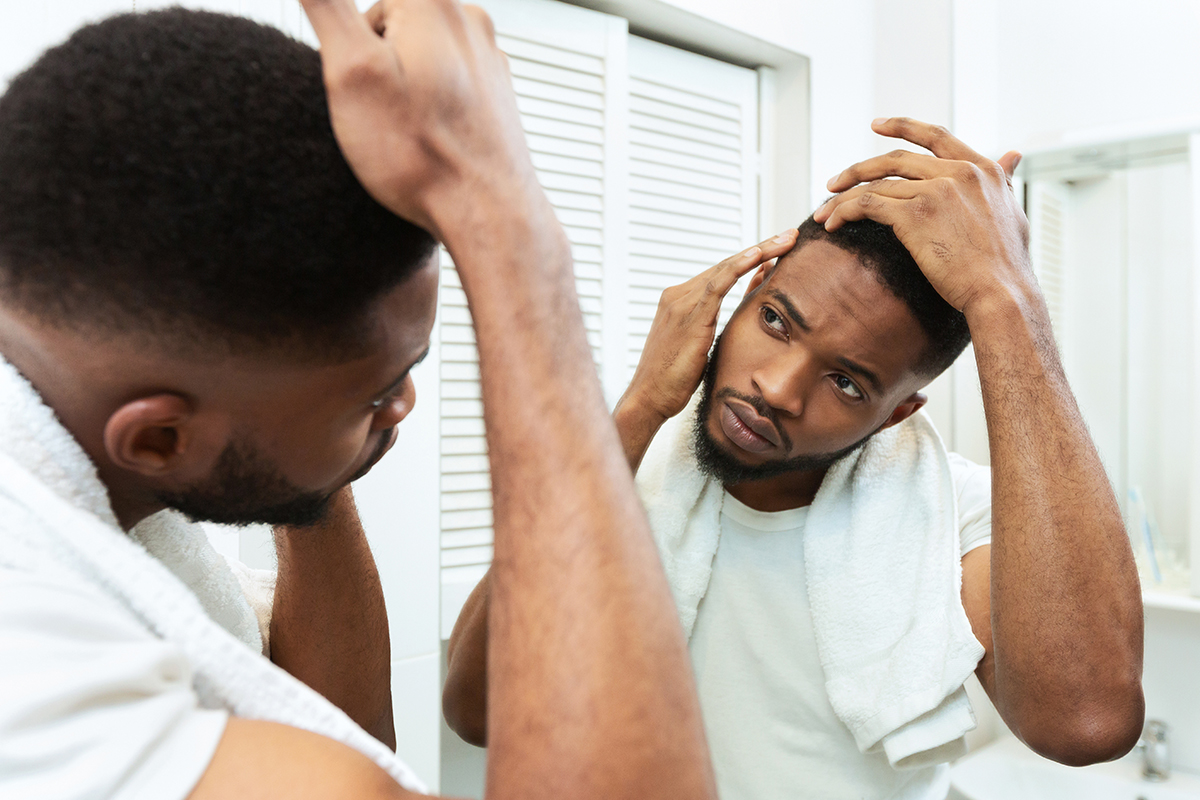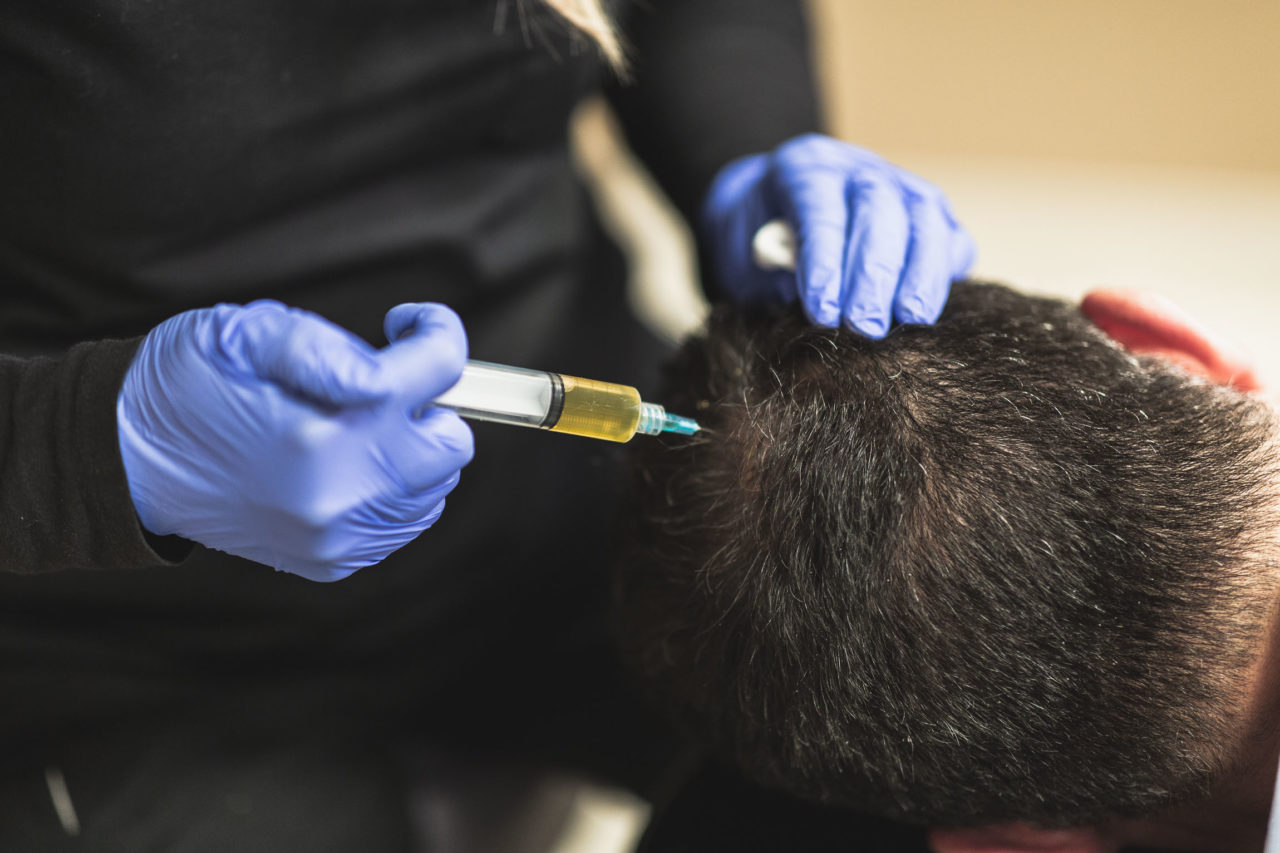
You may think of balding as an unavoidable part of growing older, but it doesn’t have to be. If you’ve noticed thinning hair, it typically means a lot of hair is already gone for good. Whether your hair loss is caused by age, genetics, health factors, or medication, the impact on your confidence is the same. At Envision Aesthetics, we’ve mastered the art of hair transplant surgery. In Rochester, people come to our team for effective reversal of hair loss with surgical and non-surgical approaches.
Dr. Whipple offers hair transplant surgery via two technologies: NeoGraft® and Artas®.What is a hair transplant?
You may have heard the term “hair plugs” before; this is a common term people use to describe surgical hair transplants. It uses your own healthy follicles to regrow hair in sparse areas with significant thinning. Because hair grows in cycles, it may take awhile before you see results, but before long you’ll see new hair—your own hair—regrowing in those areas that had been thinning.
Older methods for hair transplants required surgical incisions to harvest an entire strip of skin and hair to transplant to the recipient area. This was needed to ensure hair follicles stayed healthy and growing.
The procedures we use for surgical hair transplants in Rochester, New York leave those invasive methods in the dust. We achieve incredible results that often exceed those of traditional hair plugs, with no scars, stitches, or staples.
How long does a hair transplant last?
The precise method of extraction we use for hair transplant surgery in Rochester avoids damaging the hair follicles during the harvest phase. Therefore, when the follicles integrate into the recipient area of the transplant, they grow naturally for years, exactly like the rest of the healthy follicles in your scalp.
Artas® hair transplant surgery
Artas is a robotic machine that eliminates the need for a donor strip of skin and hair for the transplant. Artas uses Follicular Unit Extraction (FUE), taking donor hair without scalpel incision and giving the ability to precisely implant the follicles where you need them.
We precisely harvest individual follicles from the donor area, selecting the healthiest hair follicles for transplant with a high-definition stereoscopic vision system, a robotic arm, and the Artas Artificial Intelligence algorithms.
With Artas, you don’t experience scarring in the donor area, nor do you have to deal with incisions, stitches, or staples.
NeoGraft® hair transplant surgery
Like Artas, NeoGraft is a form of FUE hair transplant. The main difference between them is that NeoGraft is not a robotic procedure. A minimally invasive hair transplant, your provider expertly harvests specific follicles and implants them in the designated treatment areas. With NeoGraft’s handheld, manual device we achieve precise and effective hair transplants.
Types of hair loss
Hair loss, also called alopecia, is a disorder that, while it can occur all over the body, typically affects the scalp.
Androgenetic alopecia is the most common form of hair loss; it impacts more than 50 million men and 30 million women in the United States alone. Androgenetic alopecia is hereditary and tends to impact men and women with different types of hair loss.
Patients at Envision Aesthetics with hair loss find it typically presents in one of two ways: patchy or diffuse. Our options for hair transplant surgery allow us to treat both types of hair loss.
Patchy hair loss
Patchy hair loss is when concentrated areas lose a significant amount of hair. Male pattern baldness is an example of patchy hair loss, with hair falling out around the crown of the head above the temples.
Diffuse hair loss
Diffuse hair loss is more closely related to female pattern baldness. This overall hair thinning doesn’t have any specific bald spots or areas of patchiness. Diffuse hair loss may not be as noticeable as patchy hair loss, but it can still cause self consciousness.
Men and women experience hair loss with age, changes in hormones, and other factors that can affect the prevalence of hair. Men and women can experience both or either types of hair loss as well.
Risk factors for hair loss
Genetics is typically a major factor in not just if a person experiences hair loss, but when. Family history can determine whether hair loss starts immediately after puberty, as it does for some, or whether it starts far later in a person’s life. A number of other factors increase your risk for hair loss, including:
- Family history of balding on your mother’s or father’s side
- Age
- Significant weight loss
- Certain medical conditions, such as diabetes and lupus
- Stress
- Poor nutrition
- Certain medications
- Tight, pulling hairstyles
Other hair loss treatment options
Hair transplant surgery in Rochester is not the only path to regrowing your own natural hair. We offer entirely non-invasive approaches to restore lost hair for patients who are interested.
LED light therapy for hair loss
For a non-surgical, non-invasive approach, Envision also offers the REVIAN hair growth system. This convenient at-home treatment uses a lightweight, wireless smart cap device. A smartphone app reminds you to wear the device and ensures you use the device for the optimal time.
REVIAN light therapy for hair loss includes a 6-month money back guarantee.
PRP injections for non-surgical hair restoration
Another choice for hair restoration without surgery, (PRP) platelet-rich plasma for hair loss in Rochester might be a perfect treatment for you!
PRP treatments for hair loss use growth factors in your blood for powerful restoration of hair follicles. All it takes is a simple blood draw in our office, followed by preparation of the PRP by spinning the blood in a centrifuge to extract the platelet-rich plasma.
We inject the PRP directly into your scalp so the growth factors can stimulate hair follicles, encouraging them to regrow your own hair.

How does a PRP treatment work?
Blood Draw
First, we perform a blood draw similar to the kind you get for blood tests. At this time we apply topical numbing cream to the injection site(s) to ensure the most comfortable experience for you.
Activate the PRP
To separate the PRP from the blood, we spin it in a centrifuge at specific speeds. The white blood cells within the plasma hold a vital amount of natural growth factors that stimulate hair growth.
Inject PRP
We inject the PRP back into the treatment areas with a thin needle to encourage new hair growth. Most patients require a series of treatments to achieve their desired results.
What is platelet-rich plasma?
For decades, physicians have used PRP to stimulate healing in injured tissue. It’s one of the most natural ways to accelerate repair and regenerate tissue. PRP is made from your own blood, and all blood is made up of plasma and blood cells. Plasma is the liquid that circulates the cells; it contains platelets that cause blood clots, helping with wound healing.
Have you heard the old adage about how a little bit of pus is a good sign of healing? That’s because the yellowish goo discharging from a healing wound is platelet-rich plasma!
How does PRP help with hair growth?
The major growth factors in PRP enhance the functions of other cells they come into contact with. That’s why we’ve learned how to isolate it from our blood and inject it into other parts of the body with a variety of benefits thanks to the boost in cellular growth.
Prescription medication for hair loss
At the moment, there are only a couple FDA-approved medications to treat hair loss. These medications are finasteride and minoxidil. Unfortunately, these medications have to be taken regularly, and the results can be inconsistent.
These drugs also can have side effects that you won’t have from a surgical hair transplant. Minoxidil may cause dryness and an itchy scalp, while finasteride may cause sexual dysfunction in men.
With hair transplant surgery, there are less negative side effects because the treatment uses your body’s own resources!
How does hair grow?
Understanding how hair grows can help to understand more about hair loss. Especially when hair loss is caused by something like a stress event, which can cause the follicles in specific stages to go dormant.
In general, hair goes through three phases of growth: anagen, catagen, and telogen.
Phase 1: Anagen – Active Growing
Anagen is the active growing phase where the hair bulb is intact. Hair grows in both directions—upward and downward. Early anagen is when the bulb is closest to the surface of the skin, and contains an abundance of melanin (pigment). This phase allows for the most effective treatment.
Phase 2: Catagen – Regression
Catagen is a brief intermediate phase between anagen and telogen. It is a regression phase, when the lower part of the hair stops growing but has not been shed, and when the body absorbs the lower third of the follicle.
Phase 3: Telogen – Resting
Telogen is the resting phase. The hair bulb is no longer present, and is now a club hair, which will fall out, or be pushed out of the follicle by a new anagen growing hair.
If something occurs to interrupt these growth phases, it can lead to unwanted hair loss. During your consultation with the hair loss experts at Envision, you’ll have the opportunity to ask all of your questions about hair growth, causes of hair loss, and more.
Schedule your free hair restoration consultation with the Envision Aesthetics team!
If you have hair loss you’d like to address, come see the Envision team today.
We offer state-of-the-art non-surgical hair restoration and hair transplant surgery in Rochester and want to help you treat your concerns and restore a head of hair you can be proud of.
Use our online virtual consultation tool to learn more about all our treatments that address your concerns, or request an appointment.